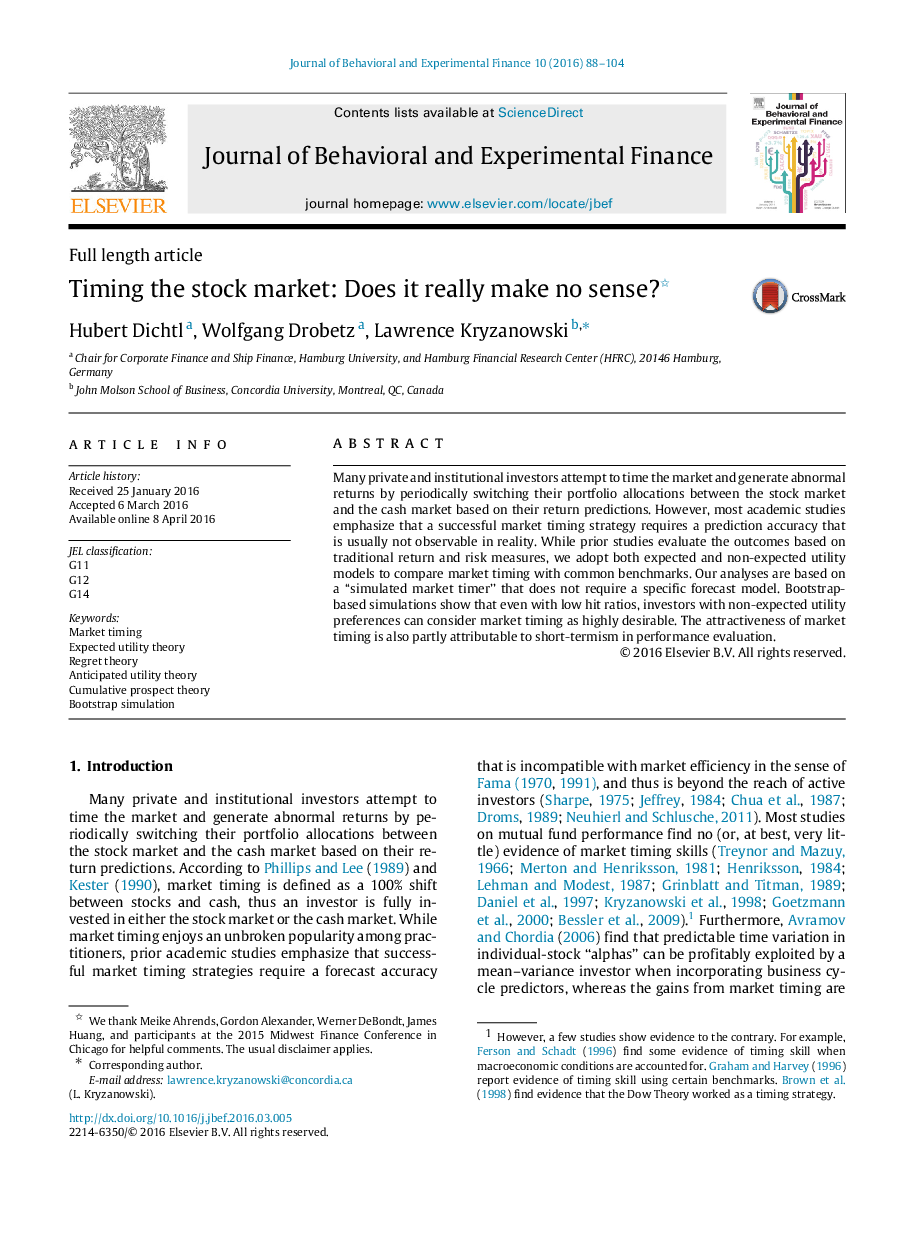| Article ID | Journal | Published Year | Pages | File Type |
|---|---|---|---|---|
| 931676 | Journal of Behavioral and Experimental Finance | 2016 | 17 Pages |
Many private and institutional investors attempt to time the market and generate abnormal returns by periodically switching their portfolio allocations between the stock market and the cash market based on their return predictions. However, most academic studies emphasize that a successful market timing strategy requires a prediction accuracy that is usually not observable in reality. While prior studies evaluate the outcomes based on traditional return and risk measures, we adopt both expected and non-expected utility models to compare market timing with common benchmarks. Our analyses are based on a “simulated market timer” that does not require a specific forecast model. Bootstrap-based simulations show that even with low hit ratios, investors with non-expected utility preferences can consider market timing as highly desirable. The attractiveness of market timing is also partly attributable to short-termism in performance evaluation.
